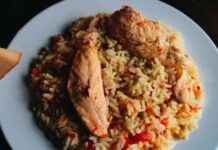Engaged in a race against time, researchers are trying to save this second largest mollusc in the world, threatened with extinction.
«Today, it only survives in certain lagoons. At sea, there is no longer a real population capable of reproducing, only a few individuals here and there», laments Serge Planes, research director at the CNRS, fixing the pond of Salses-Leucate.
Since 2016, a parasite (Haplosporidium pannaé) which lives in the waters of the Atlantic Ocean, has decimated almost all of the large pen shells, an endemic species of the Mediterranean which can measure 1m20 in height and live for forty years.
It would have been introduced into the Mediterranean by cargo ships from African or American ports, according to the most probable hypothesis.
«We started the work in 2018, trying to treat the sick mother-of-pearl», explains to AFP Pascal Romans, head of the aquariology service at the Oceanological Observatory of Banyuls-sur-Mer and research engineer at Sorbonne University. .
Very quickly, scientists realized that it was a waste of time and refocused on the idea of conservation and reproduction of healthy individuals in captivity.
First objective: «be able to trigger spawning, even outside the natural reproduction period, by playing on the environmental parameters in the aquariums such as temperature or salinity», explains Mr. Romans.
Flanked by a mask and a diving suit, Titouan Morage, research engineer at the Center for Island Research and Environmental Observatory (CRIOBE) in Perpignan, carefully scans the bottom of the Salses-Leucate pond, straddling the departments of Aude and Pyrénées-Orientales.
Nearly 100,000 mother-of-pearl (Pinna nobilis), still spared by the killer parasite, rub shoulders with sea urchins and farmed oysters.
By scratching the ground to release sand, without damaging it, this bivalve which looks like a giant mussel, Mr. Morage extracts eight of them in total.
Wrapped in cotton, these large mother-of-pearls will make the trip to the marine research animal house hosted by the Canet-en-Rousillon aquarium, about twenty kilometers further south.
There, wedged at the bottom of a basin in pairs, they are subjected by the researcher to a temperature shock which will promote the release of gametes.
«We managed to obtain reproduction phenomena, and fertilized eggs became larvae», welcomes Titouan Morage.
But, finding the food sequence allowing them to pass from the larval stage to the so-called «colonization» stage, with the formation of the shell and its attachment to the sandy bottom, «is not yet won», testifies Pascal Romans.
«Currently, we only arrive at about ten days of breeding, knowing that the larval phase generally lasts three weeks», continues the researcher.
– «Like the panda» –
In the long term, the team dedicated to this program hopes to be able to accumulate a large stock of mother-of-pearl in captivity, in order to repopulate the natural environment, «once the relationship between host and parasite is stabilized», he adds.
And time is running out, because another concern haunts people’s minds: «the possibility of inter-species transmission: at some point, when the parasite has decimated the target species, it can transfer to another species, and there , will it be oysters for consumption? Mussels?» asks Serge Planes, who leads the project for monitoring and safeguarding mother-of-pearl, emblematic of the Mediterranean.
In Antiquity, its byssus – very resistant fibers allowing them to adhere to the substrate – was used for the manufacture of fabrics or protective armor. The mother-of-pearl was also consumed, especially in Greece and Turkey, until before its virtual disappearance, recalls the researcher.
But beyond its real usefulness for man or the seabed, it is the «heritage» aspect that it represents that Mr. Planes puts forward for its safeguard: «why do we worry a lot of the disappearance of the panda? It’s a bit the equivalent. It’s a symbol of the ability or not of man to prevent the degradation of natural environments», according to him.











